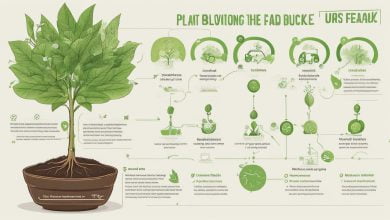
Welcome to the Agile Management Journey, a dynamic and flexible approach to product development that emphasizes customer collaboration, iterative planning, and continuous improvement. Agile methods have rapidly gained popularity in today’s fast-paced business environment, enabling teams to navigate uncertainty and deliver value to their customers in shorter time frames.
In this section, we will explore the key concepts of Agile methods and Agile project management, highlighting the benefits of adopting an Agile approach for product development. We will discuss the principles that underpin Agile and provide practical insights into successful Agile implementation.
Key Takeaways:
- Agile Management Journey is a flexible approach to product development emphasizing customer collaboration, iterative planning, and continuous improvement.
- Agile methods enable teams to navigate uncertainty and deliver value to their customers in shorter time frames.
- Adopting Agile principles streamlines development cycles, expedites decision-making, and delivers high-quality products to the market faster.
Understanding User Stories in Agile Product Development
In Agile product development, User Stories serve as a fundamental tool for creating customer-centric products. User Stories are concise, easy-to-understand narratives that describe the user’s activities, needs, and goals. They help teams to focus on delivering value to customers while prioritizing features and functions that are most important to them.
Agile Principles underpin User Stories and guide product development. These principles include:
- Collaboration with customers and stakeholders
- Iterative and incremental development
- Continuous feedback and adaptation
- Embracing change
- Delivering value to the customer
When crafting User Stories, it’s important to follow a few key principles:
- Focus on the user’s perspective, needs, and goals
- Keep the stories concise and specific, avoiding ambiguity
- Express the user’s needs in a way that can be easily understood by the development team
- Ensure that stories are testable, so that the team can validate the product’s features
By following these principles, teams can deliver products that meet the needs of their customers, while keeping development cycles lean and efficient. And the more comfortable your team becomes with User Stories, the faster you’ll be able to produce them, resulting in faster product delivery.
Effective User Stories
Effective User Stories are crucial to Agile product development. Here are a few tips for crafting effective User Stories:
| TIP | DESCRIPTION |
|---|---|
| Incorporate customer feedback | Make sure the User Stories reflect the feedback from the users to ensure they are driving assumptions |
| Focus on the critical features | Identify the key features that will deliver the most value to the user and provide a strong competitive advantage |
| Keep them small | Break down complex stories into smaller, more manageable ones to ensure each feature is testable and validated |
| Include acceptance criteria | Describe what is necessary for the User Story to be considered complete and of high-quality |
| Collaborate with the team | Ensure everyone on the team understands the User Story and its implications, and that any potential obstacles are identified early |
By incorporating User Stories into your Agile product development process, you can ensure that customer needs are met, while keeping your development cycles efficient and effective.
Agile Project Management: Scrum and Kanban
Agile project management is a flexible and iterative approach to project management that emphasizes collaboration, adaptability, and customer satisfaction. Two popular Agile project management frameworks are Scrum and Kanban.
Scrum is a framework for managing and completing complex projects. It is based on the principles of transparency, inspection, and adaptation. In Scrum, a cross-functional team works together to deliver a product incrementally, with each iteration consisting of a planning, implementation, and review phase. The team meets regularly to discuss progress, identify opportunities for improvement, and adjust their approach as needed.
Kanban is a visual system for managing work in progress. In Kanban, work items are represented by cards (also known as “tickets”) and organized on a board that visualizes the flow of work from start to finish. The focus is on limiting work in progress, reducing waste, and continuously delivering value to the customer. Kanban emphasizes transparency, flow, and customer focus.
While Scrum and Kanban share some similarities, they also have notable differences. Scrum is best suited for teams that work in fixed-length iterations and benefit from clearly defined roles and processes. Kanban, on the other hand, is ideal for teams that work on a continuous flow basis and value flexibility and adaptability.
| Scrum | Kanban |
|---|---|
| Uses fixed-length iterations | Works on a continuous flow basis |
| Has clearly defined roles and processes | Emphasizes flexibility and adaptability |
| Focuses on delivering a product incrementally | Emphasizes limiting work in progress and delivering value |
Ultimately, the choice between Scrum and Kanban will depend on the specific needs and goals of your team and project. It’s important to carefully evaluate both frameworks and determine which one is the best fit for your organization.
Accelerating Product Development with Agile Methods
Agile methods have revolutionized the way products are developed, enabling teams to deliver high-quality products faster than ever before. The iterative and incremental approach of Agile allows for continuous feedback and adaptation throughout the development cycle, accelerating the product delivery process.
By embracing Agile principles, teams can streamline their workflows and optimize their project management practices. One of the key benefits of Agile project management is its ability to expedite decision-making. By breaking down tasks into smaller, manageable units, teams can make informed decisions quickly, ensuring that the development process stays on track.
Another advantage of Agile methods is their focus on collaboration. Teams work closely together, sharing ideas and expertise, which leads to better outcomes. This fosters a sense of ownership and accountability, inspiring team members to take an active role in the development process, resulting in a higher-quality product.
Finally, Agile methods also prioritize continuous improvement. Regular reviews and retrospectives provide an opportunity for teams to evaluate their work and identify areas for improvement. By making adjustments and refining their processes, teams can increase productivity and efficiency, delivering products that meet or exceed customer expectations.
Enhancing Team Performance through Agile Management
Agile management practices are designed to enhance team performance, boost productivity, and improve product delivery.
Collaborative decision-making is an essential Agile management technique. By involving every team member in the decision-making process, organizations can leverage diverse perspectives, share responsibilities, and build consensus. This approach empowers team members to take ownership of their work and actively contribute to achieving the team’s objectives.
Self-organizing teams are another key feature of Agile management. By giving teams the autonomy to decide how to complete their work, organizations can create an environment of trust and accountability. Teams are better equipped to identify and solve problems, prioritize tasks, and adapt to changing circumstances. This enables organizations to achieve faster and more efficient product delivery.
Regular retrospectives are also critical to Agile management success. These are opportunities for teams to reflect on their performance, identify areas for improvement, and develop action plans to address any issues. By regularly reviewing their practices and processes, teams can continuously improve and deliver higher-quality products to customers.
Agile management is all about encouraging teams to collaborate, take ownership of their work, and strive for continuous improvement. By embracing Agile management principles, organizations can foster a positive work culture, enhance team performance, and achieve their product delivery goals.
Overcoming Challenges in the Agile Management Journey
Implementing Agile Methods in organizations is not always an easy journey. While the benefits are unarguable, several challenges can arise, and managing them can be crucial to ensure the Agile Management Journey is successful.
Resistance to Change
One of the most common challenges faced by organizations in the Agile Management Journey is resistance to change. Employees might push back against Agile project management frameworks, especially when they are used to traditional methods.
To overcome this challenge, organizations need to educate and train their teams on the Agile Principles and how they can help to deliver the best products to customers. Organizations can also emphasize the benefits of Agile adoption, such as faster delivery, continuous improvement, and greater customer satisfaction.
Unrealistic Expectations
Another common challenge is having unrealistic expectations of what Agile methods can accomplish. Some organizations might expect immediate results, but Agile is an iterative and incremental approach that takes time.
To manage this challenge, organizations need to set realistic expectations and educate stakeholders on the nature of Agile methods. They should emphasize that Agile is a continuous process that involves regular feedback and adaptation, with a focus on delivering value to customers.
Resource Constraints
Resource constraints can also hinder the Agile Management Journey. Organizations might lack the necessary resources, such as skilled professionals, tools, or funding, to fully implement Agile methods.
To manage this challenge, organizations should prioritize their initiatives and allocate resources accordingly. They should also invest in training and development to build a skilled Agile team with the necessary expertise to deliver high-quality products.
By addressing these challenges, organizations can navigate the Agile Management Journey more effectively and sustainably.
Best Practices for Successful Product Delivery in Agile Environments
Successful product delivery in Agile environments depends on a combination of Agile principles, project management methods, and team collaboration. By adopting the following best practices, teams can optimize their processes and deliver value to their customers.
Cross-Functional Teams
In Agile environments, it is essential to build cross-functional teams with diverse skills and expertise. By incorporating different perspectives, teams can approach problem-solving more creatively and effectively. Additionally, cross-functional teams can better manage project workflows, ensuring that all aspects of product development are addressed comprehensively.
Iterative Planning
Iterative planning is a fundamental principle of Agile methods. By breaking down complex projects into smaller, manageable parts, teams can plan and prioritize tasks more effectively. This approach allows teams to adjust plans as needed, based on continuous feedback and changing customer requirements.
Continuous Integration
Continuous integration is another crucial component of Agile methods. By integrating code changes frequently, teams can detect and address issues early in the development cycle. This approach enables teams to maintain a high level of quality while reducing the time and effort required for testing and deployment.
Conclusion
By following these best practices, Agile teams can optimize their product delivery processes and create value for their customers. Cross-functional teams, iterative planning, and continuous integration are just a few of the key components of successful Agile product development. With the right mindset, tools, and collaboration, organizations can achieve sustainable success on the Agile Management Journey.
Conclusion
In today’s fast-paced business environment, Agile Management is a crucial tool for successful product development. By adopting Agile methods and principles, organizations can streamline workflows, expedite decision-making, and deliver high-quality products to the market faster. Agile project management frameworks like Scrum and Kanban provide teams with clear methodologies to manage project workflows and optimize product delivery processes.
However, the Agile Management Journey is not without its challenges. Resistance to change, unrealistic expectations, and resource constraints can impede progress and derail projects. It is essential to recognize and proactively address these challenges to navigate the Agile Management Journey effectively.
By following best practices like cross-functional teams, iterative planning, and continuous integration, organizations can optimize their product delivery processes and create value for their customers. Agile management practices that drive team performance, such as collaborative decision-making, self-organizing teams, and regular retrospectives, can empower teams to take ownership, boost productivity, and deliver exceptional results.
Overall, the Agile Management Journey is a transformative experience that enables organizations to adapt to changing market conditions and deliver innovative solutions to their customers. By embracing this journey and leveraging the power of Agile methods, organizations can achieve sustainable success and drive growth.
FAQ
Q: What is the Agile Management Journey?
A: The Agile Management Journey refers to the process of adopting and implementing Agile methods and principles in project management and product development. It involves transitioning from traditional, linear approaches to a more iterative and adaptive approach to delivering products.
Q: What are Agile methods and Agile project management?
A: Agile methods are a set of principles and practices that promote flexibility, collaboration, and continuous improvement in project management and product development. Agile project management is the application of these methods to effectively plan, execute, and deliver projects in an Agile manner.
Q: What are User Stories and their role in Agile product development?
A: User Stories are concise descriptions of a feature or functionality written from the perspective of an end user. They capture the “who, what, and why” of a product requirement and serve as a communication tool between stakeholders and development teams in Agile product development.
Q: What are Scrum and Kanban?
A: Scrum and Kanban are popular Agile project management frameworks. Scrum is focused on iterative development, with time-boxed iterations called sprints. Kanban, on the other hand, visualizes tasks on a board and emphasizes continuous flow. Both frameworks provide teams with structure and promote transparency and collaboration.
Q: How can Agile methods accelerate product development?
A: Adopting Agile methods allows teams to work in shorter iterations, gather feedback early and often, and make quick adjustments. This iterative and incremental approach helps accelerate product development by reducing time spent on unnecessary features and delivering value to customers faster.
Q: How can Agile management enhance team performance?
A: Agile management practices, such as collaborative decision-making, self-organizing teams, and regular retrospectives, empower teams to take ownership and improve their performance. By fostering a culture of continuous improvement, organizations can enhance team collaboration, productivity, and overall performance.
Q: What are some common challenges in the Agile Management Journey?
A: Common challenges in the Agile Management Journey include resistance to change, unrealistic expectations, and resource constraints. These challenges can impede the adoption and implementation of Agile methods and require proactive strategies to address and overcome.
Q: What are best practices for successful product delivery in Agile environments?
A: Best practices for successful product delivery in Agile environments include forming cross-functional teams, practicing iterative planning, and implementing continuous integration. These practices enable organizations to deliver high-quality products efficiently and meet customer needs.








